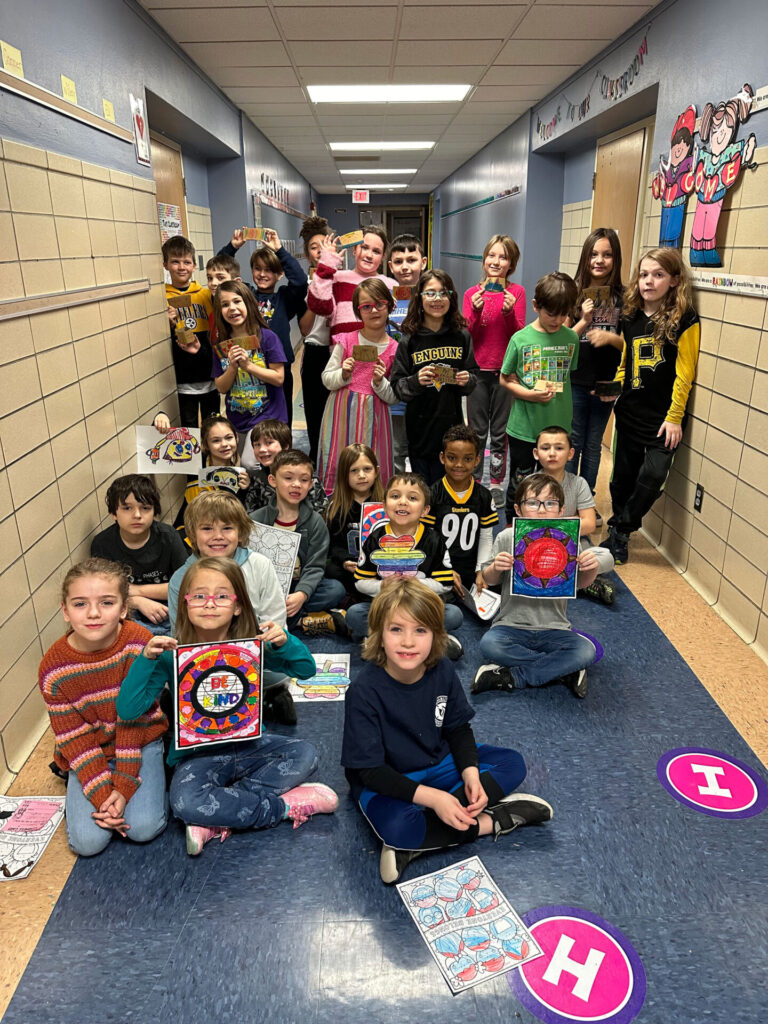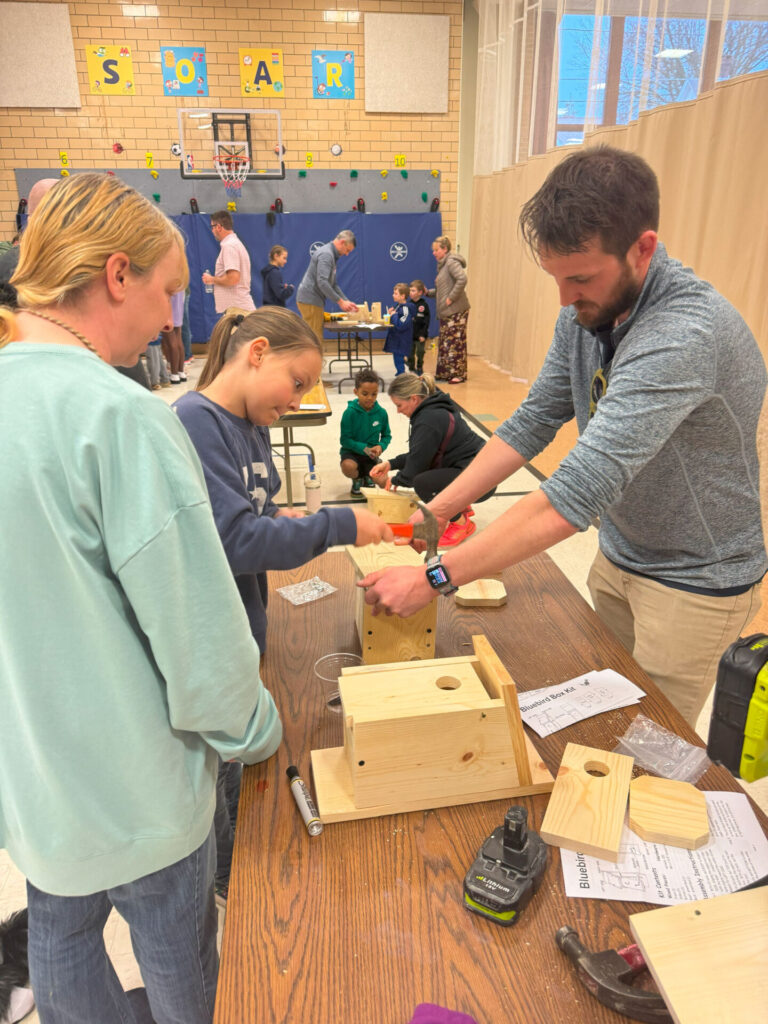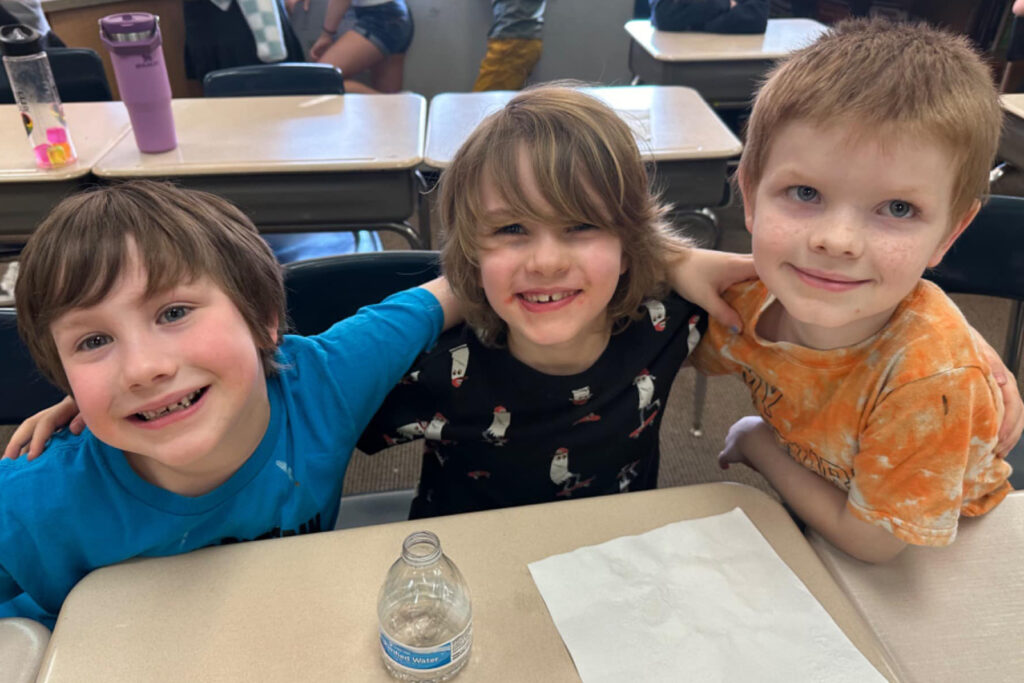This article is part of a series that highlights school districts in the region that are aligned with the Personalized Learning Framework created by the SWPA Personalized Learning Working Group.
Six-year-old Finn Curran, a first-grader at Emily Brittain Elementary in Butler Area School District, loves gym and books and everything about school, but his favorite activity is spending time with Emerson, his fourth-grade school partner. Together they work on projects and games in a yearlong partnership that supports intra-school bonds and a sense of belonging.
Emerson is smart and kind, said Finn, but the best part about his buddy relationship is having a “new friend at school.”
At Emily Brittain, home to 260 K-5 students, strong learner relationships are the school’s heartbeat, a theme that resonates across the sprawling 150-square-mile district. Butler Area serves more than 6,000 students in ten geographically diverse schools — the district serves rural, urban and suburban regions, each with unique identities.

“When we came out of COVID, we determined we needed a path forward to re-engage everyone,” said Julie Hopp, the Director of Curriculum, Instruction and Professional Development at Butler Area School District.
Leveraging brain science and research about learning, the district developed a philosophy that elevated strong relationships as the cornerstone for student success and achievement.
“What we said to everyone was, ‘You have to build relationships, first and foremost.’ This is the most important thing — our foundational building block,” Hopp said.
Butler’s seven elementary schools use a common curriculum, but to encourage flexibility and “capture maximum engagement,” the district tasked them with identifying unique visions, or focus plans, to build community buy-in and support.
Each school participated in a four-month collaborative process that prioritized human-centered design, giving “everyone a voice and a say — staff, students, parents, and the community at large,” Hopp added.
The resulting plans reflect Butler Area’s diversity. Summit Elementary School, for example, surrounded by 16 acres of farmland, settled on a school-wide agriculture mission. At Connoquenessing Elementary, the focus is outdoor learning. Emily Brittain Elementary, a modest, mid-century-style school in the heart of Butler’s cultural district, has adopted a focus called “Building On Our Strengths Together,” or “BOOST.”
The concept illustrates “what everyone can bring to the table to provide a dynamic learning experience for our students,” said Josh Hundertmark, the principal at Emily Brittain.
“My philosophy is, ‘Let’s create an environment so that students want to be here,’” Hundertmark said. “We want students to enjoy coming to school — it’s about making friends, socializing, being engaged and learning.”
Emily Brittain implemented flexible learning environments that give students the space and support “to interact with one another,” explained Hundertmark. A collaborative classroom doubles as a S.T.E.A.M. hub, with coffee shop-style whiteboard tables (for brainstorming) and bold paint colors.
“It’s a school, not a hospital,” said Hundertmark, describing the school’s deliberate work to create comfortable, colorful spaces that feel warm and accessible.
Emily Brittain also surveyed students to discern priorities, revealing their desire to more deeply involve families at school. It was the “number one want and need,” Hundertmark noted.

In response, his team created opportunities for engagement. The school relaunched the PTO, improved the way it communicates with parents, and revived large-scale school events. Participation has soared, and daily school attendance is now above 90 percent. Although changes at Emily Britain are new, student achievement is already trending upward.
“School has to be more than just ELA, math and science,” said Hundertmark, who is building a culture that prizes engagement and belonging before anything else.
For Sarah Curran, a second-generation Emily Brittain alumna and active parent volunteer, the proof is clear every day after school. When it’s time to pick up Finn, she said, “he is just so happy.”
Author: Erin Kane
